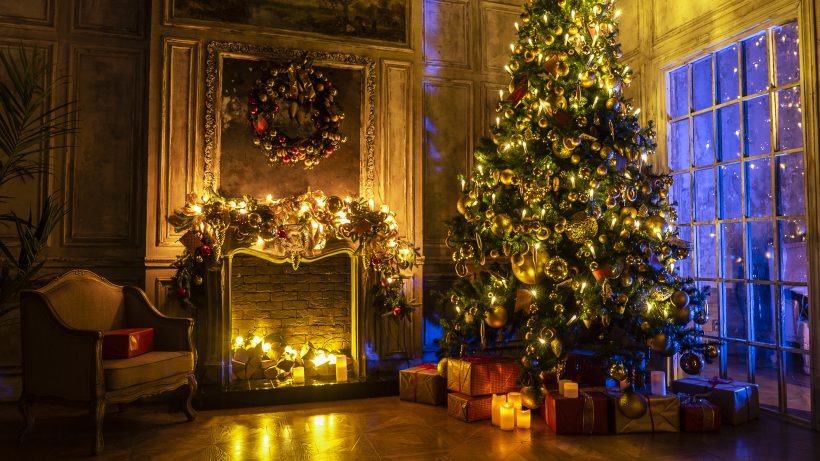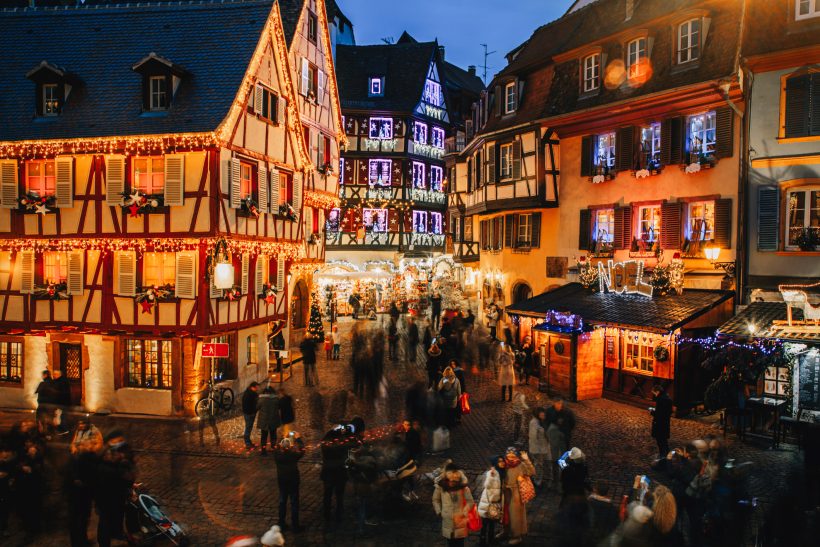Modern Christmas Traditions

|
Getting your Trinity Audio player ready... |
Christmas originated in Europe, with many traditions today stemming from Roman Saturnalia and Celtic Solstice celebrations. Our modern era didn’t originate the Christmas traditions that we enjoy now. Many countries celebrate Christmas on December 25th to mark the birth of Jesus Christ. A religious and cultural celebration aligned with Christianity, Christmas has become a significant holiday, attracting large populations worldwide. Many Christmas traditions began as festivals and traditional celebrations.

Something old, something new, something borrowed, something red? Why is red the most prominent color for Christmas? Among other questions. Why do we go overboard with the festivities, the gift-giving, the endless eating, drinking, and partying too much? Has it always been this way? Or did those celebrated festivities in the past show more restraint?
Something Borrowed-The Festival of Saturnalia
Christmas traditions are believed to have evolved from the ancient Roman festival of Saturnalia. Saturnalia was a week long celebration celebrated in December. At the heart of it was honoring the Roman god of Agriculture—Saturnalia. It was a one-day celebration where all businesses closed, and no wars would be declared. Saturnalia was characterized by feasting like our Christmas traditions today. Food and drink were plentiful. Saturnalia was the only time of the year where servants were allowed to dine and wine with their masters.
People put aside their boring togas for this party time and donned their most colorful and stylish wear. Alongside their colorful attire and party mood, citizens indulged in cross-dressing, wearing the opposite gender’s clothes with no judgment. Homes and streets were beautifully decorated with ornaments and greenery like wreaths and garlands. A celebration of this magnitude required thorough planning ahead of time.

In time, things escalated as Saturnalia celebrations became a celebration to break all social norms and flirt with power dynamics and morality. With pleasure being the day’s business, Saturnalia, unlike Christmas, wasn’t much of a child-centric event. The prominent feature of inverting social norms gave citizens the freedom to overindulgent eating, gamble, and drink themselves to stupors.
Masters were friendly with their servants on this day, even serving them and giving in to their demands as roles were reversed. Contrary to a virgin birth at the very heart of Christmas, reckless sexual behavior reigned supreme during Saturnalia. Citizens could fulfill their wildest fantasies with few limitations, with people other than their wives and husbands, and prostitutes did excellent business.
The Saturnalia festival was an extreme celebration where Roman citizens took partying to new levels. With the introduction of Christmas, some features of Saturnalia celebrations were carried over. Lord Cromwell, appalled at how people commemorated the birth of Christ, canceled Christmas altogether because people were ‘pretending the memory of Christ, into an extreme forgetfulness of him, by giving liberty to carnal and sensual delights.’ A story for another day…
Santa Claus
Christmas today has become synonymous with Santa Claus. A chubby gentleman dressed in red with a cascading snow-white beard. Going by the slogan, “naughty or nice,” Santa is beloved by children and, sometimes, their parents. Parents bribe children into good behavior because Santa will reward them with something nice. To children, the white-bearded darling arriving by reindeer sleigh will sneak into their house and drop off that coveted PS5, Bratz doll set, and other goodies anticipated for the whole year.

If you please, a man of many reincarnations, the Santa Claus figure exists across many cultures, such as Saint Nicholas in Turkey, Pere Noel in France, Grandfather Frost in Russia, and La Befana-the Italian female version. Santa’s character has become interchangeable with the concept of gift-giving. He is known to deliver Christmas presents to children in their homes and hand out gifts in other places, including shopping malls and public spaces. Even adults enjoy Santa as they exchange gifts at work or in different social settings using the secret Santa concept.
The name Santa Clause derives from the Dutch father, Christmas-Sinterklaas. Dutch immigrants who occupied New Amsterdam, modern-day New York, popularized Sinterklaas. Coca-Cola Company also played a considerable role in popularizing Santa Claus as they featured him in their massive and colorful advertising campaigns at a time when television was a coveted gadget, much like having the latest Apple I-phone.
The Christmas Tree
It wouldn’t be Christmas without the decor. Decorations play a huge part in expressing the Christmas spirit, from our homes to public spaces. Lights, wreaths, stockings, tinsel, and of course—the Christmas tree. Early celebrations in the United States did not have a Christmas tree. Originally a German tradition, where some citizens decorated their homes with Christmas trees and lit them with candles. That was before a Christmas photo of England’s Queen Victoria and her family with their Christmas tree went viral. The queen was an influencer of her time, and her German husband, Prince Albert, introduced the decorated tree to the royal household.

The elegant Christmas tree stole the show, and the new decoration bedazzled people in England and across the Atlantic. In 1846, the Illustrated London News ran an article on the Royal Family’s tree, and the new tradition took off. Its popularity rose in the 1850s when President Franklin Pierce was credited as the first to decorate the White House with a Christmas tree.
Macy’s, being a trendsetter, was quick to decorate their stores and market the popular trees. Even today, Macy’s pulls out all the stops with Christmas decorations and attracts up to 10000 visitors per hour as they put on their famous Christmas displays. A Christmas trendsetter, Macy’s was one of the first stores to have a Santa Claus in their shop, handing out treats and sweets to their younger clientele.
Gift giving

One of the things we look forward to at Christmas is presents, with budgets earmarked by individuals and organizations alike. Families gift each other and donate to the poorer members of society. Gift-giving follows the example of the Magi, the three wise men who brought baby Jesus exquisite gifts of gold, myrrh, and frankincense. Another foundation for Christmas gifts can be found following in the footsteps of the generous Turkish monk Saint Nicholas. In what sounds like a fairy tale, Saint Nicholas was the lifesaver who saved a poor man’s three daughters from prostitution by gifting them with money to pay their dowry, which their father couldn’t afford.
In a more believable version, Saint Nicholas was born into a wealthy family. He would use his massive inheritance for philanthropic works, giving food and money to the needy. His legacy would live on through several Christian societies making it a tradition to gather gifts, place them in boxes, and open them to share with the poor on the 26th of December, Boxing Day.
Surpassing his reputation as a mad ruler, King Henry VIII, gave monetary gifts, as do employers today, with a Christmas bonus or a thirteenth paycheck. Cultures worldwide continue to give gifts as part of Christmas. Some open their presents on Christmas Eve, others a day after Christmas on Boxing Day. However, most people open them on Christmas morning.
A holiday commemorating the birth of Jesus Christ at the core, today, Christmas is celebrated by more than one hundred countries worldwide. Although some claim not to like Christmas because it’s become overly commercialized, that doesn’t dissuade most people to whom Christmas means many different things.

It’s a time for family and giving. Arguments about the specific date that Christmas is supposed to be may rage on, but it seems fitting that it is at the end of the year. A time that creates room for people to take a break from the year’s hustle and bustle. A time for introspection, celebrating wins, letting go of losses, and planning fresh beginnings for the individual and the collective.
Edited by Michael Moss












